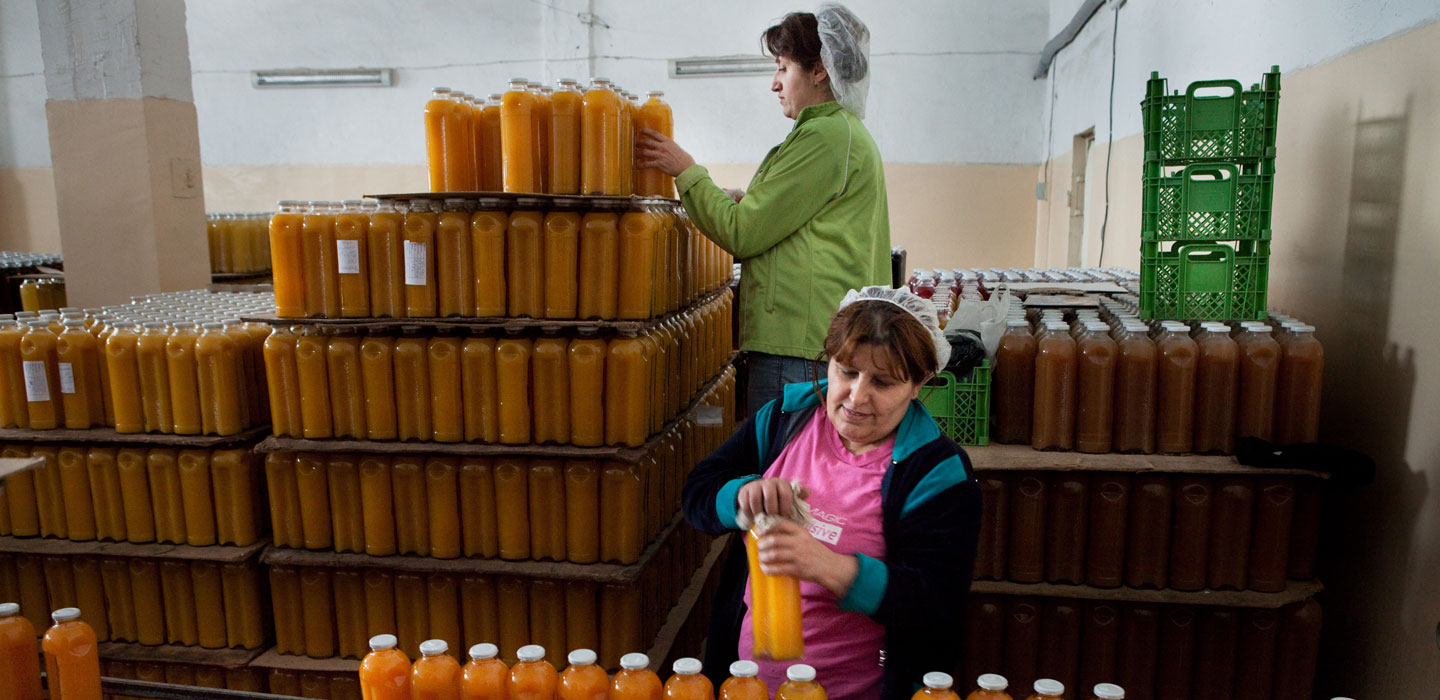In an urbanizing world, strong rural–urban links remain the key to resilient cities
IFAD Asset Request Portlet
Asset Publisher
In an urbanizing world, strong rural–urban links remain the key to resilient cities
Estimated reading time: 4 minutes
As the world becomes more and more urbanized, many have suggested that cities hold the key to an efficient, sustainable future. From basic economies of scale to the active pursuit of becoming a “sustainable city” – one that strives to achieve green sustainability, social sustainability and economic sustainability – it is thought that the environmental benefits of cities outweigh their drawbacks. Yet the reality is not so simple. Cities can have profound positive or negative impacts on their surroundings – i.e., rural communities, both neighboring and distant – and on the environment.
In the effort to make cities more sustainable, much attention is often focused on the choices of urban consumers. Certainly, educating them on the impacts of their individual and collective consumption habits on the surrounding environment is crucial. Nevertheless, urban sustainability cannot be achieved in isolation. Cities can be sustainable only when they are surrounded by thriving rural areas – particularly those with a resilient, productive and remunerative agriculture sector.
As the world becomes more urban, rural areas need to undergo a transformation of their own so that they can more efficiently and sustainably provide greater amounts of food, clean water and environmental services. And as urban and rural economies grow ever more interdependent, they also need to be better connected to each other. To holistically strengthen the entire food system, both its production and consumption aspects need to be addressed. In this regard, strengthening small-scale agricultural production is just as important as improving consumption and nutrition.
One crucial aspect of these transformations is the preservation of biodiversity. Maintaining biodiversity is central to the sustainable management of natural resources; similarly, failing to preserve biodiversity is guaranteed to have devastating economic and social consequences for both rural and urban populations. One study by the European Commission, for instance, predicts that inaction on biodiversity conservation could result in losses of US$16.5 trillion (€14 trillion) per year by 2050. To mitigate losses like these, transformations in how natural resources are used are urgently needed across the rural–urban continuum.
All of these challenges are at the forefront of the sustainability conversation in Latin America and the Caribbean (LAC), a region characterized by both its urbanization and its biodiversity. LAC is the most urbanized developing region in the world, with more than 80 per cent of its residents living in towns and cities. It is also home to one of the world’s greatest endowments of natural resources. South America alone holds over 40 per cent of the planet’s biodiversity and more than one quarter of its forests – including the Amazon rainforest, the single most biologically diverse region in the world.
LAC thus has a unique opportunity to be a leader in sustainability, especially in the context of urbanization. Biodiversity-related products and services are of crucial importance to the region’s economy, and their sustainable and strategic use can help boost the region’s long-term growth. Additionally, its food systems are still dominated by small-scale farms, which produce more than 70 per cent of the region’s food calories and are also key to maintaining its nutritional diversity.
Yet the region also faces significant challenges in this regard. Job opportunities and access to assets in the region’s rural areas remain scarce, driving a disproportionate number of youth – particularly young women – to migrate to urban areas. But even as LAC’s cities amass great wealth, they amass poverty in equal measure. Unfortunately, these cities are home to some of the greatest inequity on the planet.
The current situation in LAC exhibits a fundamental imbalance between rural and urban areas, and the potential solutions open to the region largely revolve around restoring that balance. Countries within LAC can increase the economic benefits derived from their region’s biodiversity and ecosystems by investing in and restoring key biodiversity-related sectors, such as agriculture, fisheries, forestry, water-related services, protected areas, and tourism, all of which are crucial for the region’s economy. Meanwhile, encouraging youth to remain in rural areas is essential for driving innovation within sectors like agriculture – a crucial component of the transformations that need to take place. Scaling-up the appeal of living and working in rural areas can help reduce migration and create vibrant, diverse and resilient rural economies. Indeed, solutions like these are applicable to many other regions around the world.
Strengthening rural–urban linkages is also vital for improving resilience to shocks and crises. In times of crisis, breakdowns in the food system can lead to widespread poverty and food insecurity, worsening the effects of the initial shock. The most recent of these is, of course, the COVID-19 pandemic. From its earliest days, the pandemic has shone a spotlight on the fragility of our current food systems, with disruptions to supply chains and losses of incomes. When responding to such shocks, keeping food available for both rural and urban populations, and insuring access to income to purchase food, must be a priority. Here, too, strong rural–urban links remain the key: they enhance the resilience of small-scale farmers, which in turn creates more resilient food value chains and a more resilient food system.
Food system resilience is necessary to counter the impacts of not only short- and medium-term shocks like the pandemic, but also longer-term concerns such as climate change. In this regard, strong rural–urban links can help buffer against climate volatility and any associated price volatility. Investing in inclusive value chains, in which rural actors have sufficient access to the necessary agricultural inputs and markets, will only improve the resilience of food systems.
Rural small-scale farmers are an indispensable part of this post–COVID-19 world. They can help our societies sustainably urbanize while avoiding widespread hunger and becoming more resilient to shocks – if we work with them and invest in their activities.
Publication date: 20 November 2020